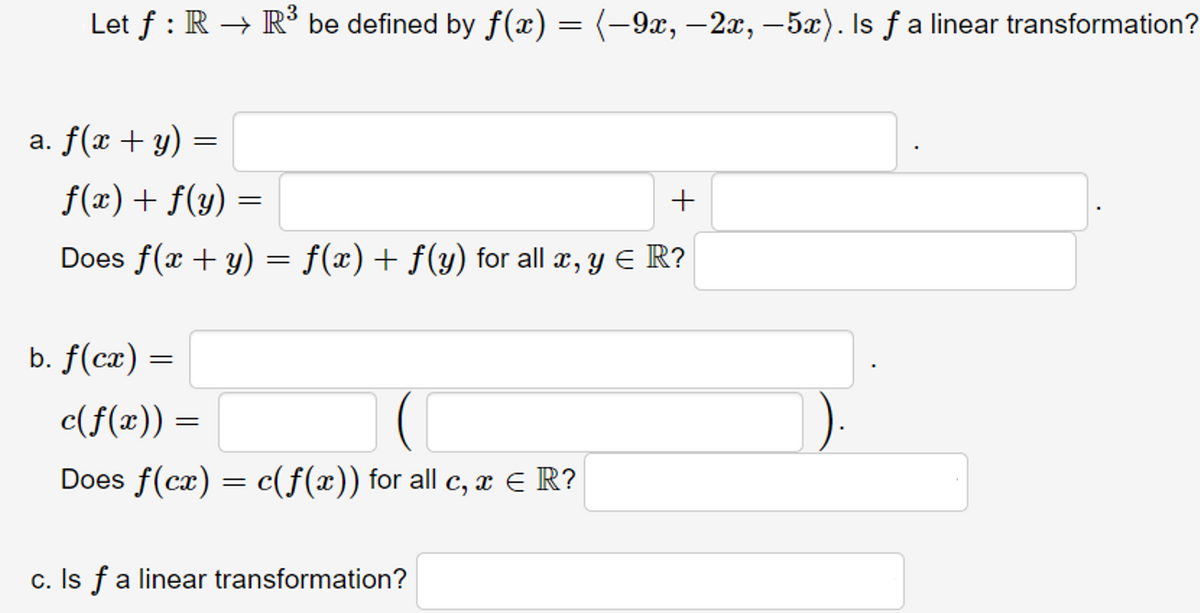Let f : R → R³ be defined by f(x) = (-9x, –2x, –5x). Is ƒ a linear transformation? a. f(x + y) = f(x) + f(y) Does f(x + y) = f(x) + f(y) for all æ, y E R? b. f(cæ) = c(f(x)) = Does f(cx) = c(f(x)) for all c, æ E R? c. Is fa linear transformation? +
Let f : R → R³ be defined by f(x) = (-9x, –2x, –5x). Is ƒ a linear transformation? a. f(x + y) = f(x) + f(y) Does f(x + y) = f(x) + f(y) for all æ, y E R? b. f(cæ) = c(f(x)) = Does f(cx) = c(f(x)) for all c, æ E R? c. Is fa linear transformation? +
Linear Algebra: A Modern Introduction
4th Edition
ISBN:9781285463247
Author:David Poole
Publisher:David Poole
Chapter6: Vector Spaces
Section6.4: Linear Transformations
Problem 12EQ
Related questions
Question

Transcribed Image Text:Let f : R → R³ be defined by f(x) = (-9x, –2x, –5x). Is ƒ a linear transformation?
a. f(x + y) =
f(x)+ f(y) =
Does f(x + y) = f(x) + f(y) for all x, y E R?
b. f(cæ) =
c(f(x)) =
Does f(cæ) = c(f(x)) for all c, æ E R?
c. Is fa linear transformation?
Expert Solution
This question has been solved!
Explore an expertly crafted, step-by-step solution for a thorough understanding of key concepts.
This is a popular solution!
Trending now
This is a popular solution!
Step by step
Solved in 2 steps with 2 images

Recommended textbooks for you

Linear Algebra: A Modern Introduction
Algebra
ISBN:
9781285463247
Author:
David Poole
Publisher:
Cengage Learning

Elementary Linear Algebra (MindTap Course List)
Algebra
ISBN:
9781305658004
Author:
Ron Larson
Publisher:
Cengage Learning

Linear Algebra: A Modern Introduction
Algebra
ISBN:
9781285463247
Author:
David Poole
Publisher:
Cengage Learning

Elementary Linear Algebra (MindTap Course List)
Algebra
ISBN:
9781305658004
Author:
Ron Larson
Publisher:
Cengage Learning